The small intestine is a part of the digestive tract, which plays a major role in digestion and absorption. The organ is located between the stomach and colon, and can be divided into three segments, the duodenum (9.8 in), jejunum (2.5 m) and ileum (3.5 m). A cancer that begins in the duodenum is known as duodenal cancer. In this article we will discuss causes and symptoms of this rare form of gastrointestinal cancer.
Causes of Duodenal Cancer
Adenocarcinoma is the most common type of duodenal cancer. Other types of tumors that may develop in the duodenum are carcinoid and sarcomas.
Exact cause of duodenal cancer is unknown but there are certain factors that increase the risk for development of this cancer. Dietary risk factors for duodenal cancer include high intake of fat and salt and low intake of fiber. Medical conditions that can trigger duodenal cancer are celiac disease, Crohn’s disease, juvenile polyposis syndrome, duodenal ulcer, atrophic gastritis, familial adenomatous polyposis infection, Muit-Torre syndrome, Gardner syndrome and Puetz-Jeghers syndrome.

Symptoms of Duodenal Cancer
Unfortunately, most patients with duodenal cancer are diagnosed when the cancer has reached advanced stage and has spread to other body organs. One of the primary symptoms of duodenal cancer is unexplained weight loss as the tumor interferes with processes of digestion and absorption. A person with duodenal cancer also experiences pain in the middle of the abdomen, nausea, vomiting, loss of appetite and swelling in the abdomen. Pain beneath the breast bone, blood in stool and abdominal bloating after a meal are common too. Additionally, duodenal cancer causes heartburn, acid reflux, fatigue and iron-deficiency anemia.
Diagnosis of Duodenal Cancer
Duodenal cancer produces symptoms similar to those of other gastrointestinal diseases. Because of this, a doctor must order different diagnostic tests and procedures to rule out other medical problems. Diagnosis of duodenal cancer includes physical examination done to check for presence of lumps in the abdomen and analysis of a sample of stool to detect presence of blood cells. The doctor may also order additional tests such as CT scan, x-ray of the abdomen, barium enema, liver function test, upper endoscopy, laparotomy and biopsy.
Treatment for Duodenal Cancer
Treatment for duodenal cancer depends on the stage of the cancer, age of a patient and other present medical conditions. Duodenal cancer is usually treated with chemotherapy and radiation therapy. Sometimes, surgery is also included in the treatment. A surgical procedure used to treat duodenal cancer is called the Whipple. This procedure involves removal of the duodenum and part of the stomach.
- Small bowel malignancies are relatively rare, accounting for only 2% of all gastrointestinal cancers in the United States. Among small bowel tumors, most malignancies arise from the ileum, followed by the duodenum and lastly the jejunum. While most tumors of the ileum are neuroendocrine in origin, adenocarcinoma is the most common duodenal cancer. One large population-based analysis found the duodenum to be the location of 55.7% of adenocarcinomas of the small bowel. The majority of DA arise in the second portion of the duodenum, followed by D3/D4, with cancers of the first portion of the duodenum, especially the duodenal bulb, extremely rare.
- The causative factors for DA have not been clearly identified. Dietary factors, such as increased intake of bread, pasta, sugar and red meat or reduced intake of fruits and vegetables, are risk factors for small bowel adenocarcinoma (SBA) as they are for colorectal cancer. Ingestion of alcohol, coffee and use of tobacco also seem to be risk factors. Nevertheless, the strength of these associations are small and the majority of cases of DA are not associated with any known causative agents.
- Tumors located in the second portion of the duodenum typically require pancreaticoduodenectomy (PD) because of proximity to head of the pancreas, distal bile duct and ampulla of Vater. Conversely, tumors occurring in the first, third or fourth portion of the duodenum may be managed by either PD or segmental resection (SR).
- Among patients with localized DA, approximately 43%-87% will have resectable disease. Of the remainder, some will require palliation. The goals of palliative surgery for DA may include relief of gastric outlet obstruction, relief of biliary obstruction and/or pain relief. Operative interventions for gastroduodenal obstruction may include gastrojejunostomy or duodenojejunostomy; either may be constructed in a roux-en-y or loop fashion.
- Pancreas-preserving total duodenectomy (PPTD) has emerged as an alternative to PD or SR for patients with benign or pre-malignant conditions of the duodenum, most commonly in the setting of FAP. After total proctocolectomy, upper gastrointestinal cancers are the most common cause of death in patients with FAP.
- The role of adjuvant radiotherapy in the treatment of DA is not well defined. No studies have demonstrated an effect on OS with the use of chemoradiotherapy (CRT). One small study of 14 patients from Johns Hopkins with node-positive DA treated with PD and adjuvant CRT resulted in improved local control compared with surgery alone (93% vs 67%).
- medlineplus.gov/intestinalcancer.html
- www.nhs.uk/conditions/stomach-cancer/
- Photo courtesy of Louis Reed by Unsplash: unsplash.com/photos/pwcKF7L4-no




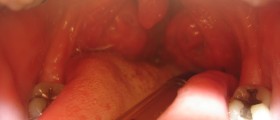

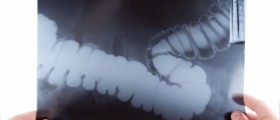



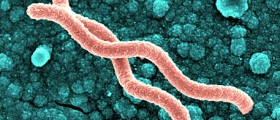
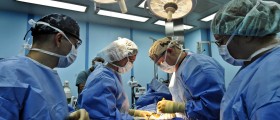




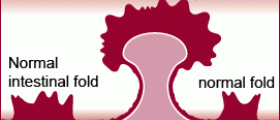
Your thoughts on this
Loading...